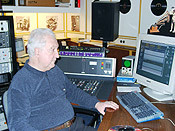While y'all play hide the chalupas, I am recalling a piano recording workshop I saw in U. of Michigan once. One of the examples of playback was recorded with two PZM microphones on the inside of the lid. It was played last, after examples of perhaps a half dozen placements of conventional varieties of high-quality microphones. The astonishing thing was that it sounded terrific, even to very critical ears. All of the case/soundboard/string sounds were well balanced. The music was Schumann, the piano a Steinway 7. The piano lid was open on the short prop. No other mics were used for that take.
These guys were uniformly critical listeners and engineers. And uniformly amazed.
<chuckle> "So, that's how Elton John does it?"


